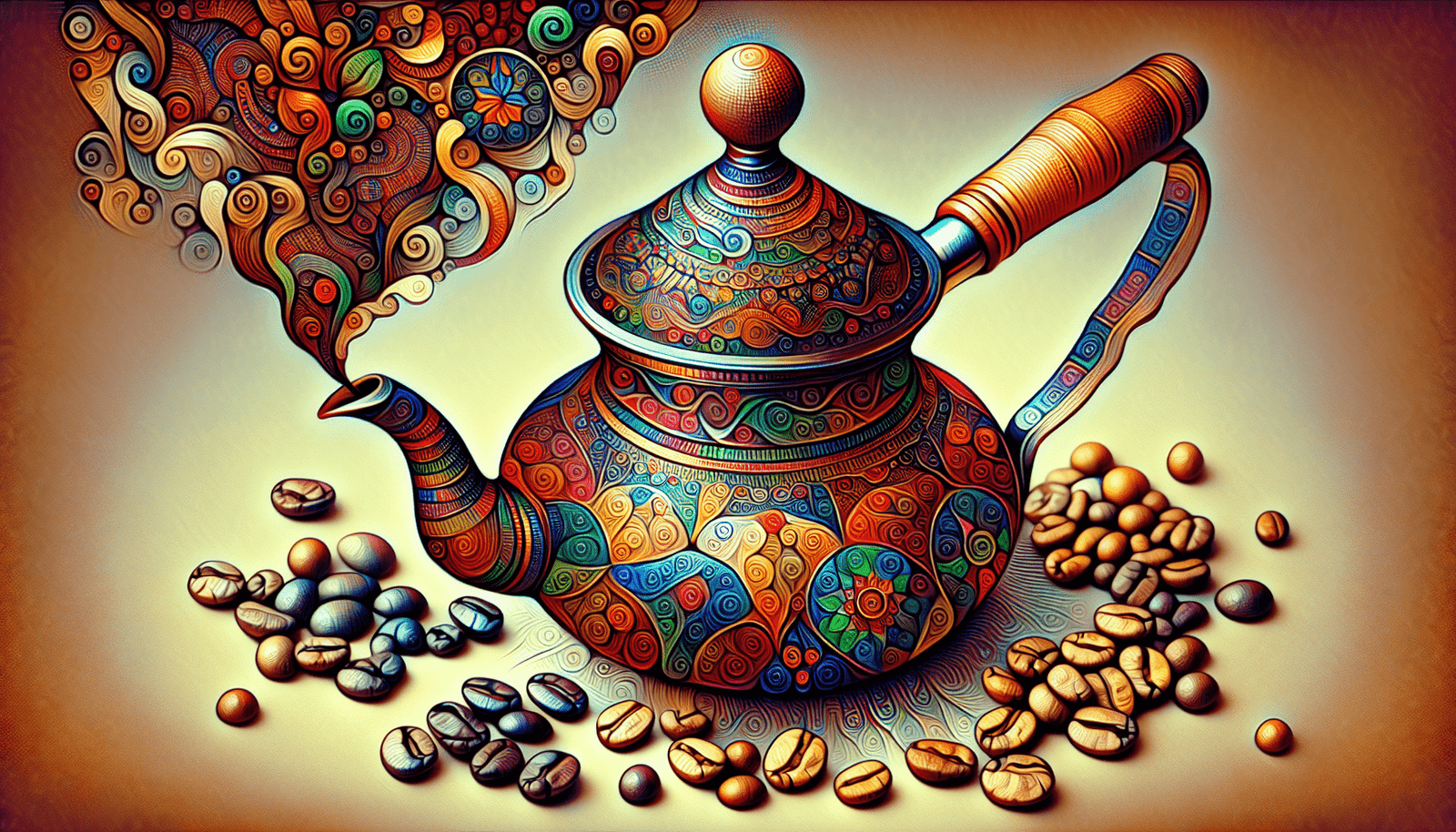Have you ever wondered what it takes to brew the perfect cup of Ethiopian coffee? In this article, we will provide you with some tips and tricks to help you achieve a delicious and authentic Ethiopian coffee experience right in your own home. From selecting the right beans to mastering the brewing process, we’ve got you covered. So grab your favorite mug and let’s get started!
Selecting The Right Coffee Beans
When it comes to brewing the perfect cup of Ethiopian coffee, the first step is to select the right coffee beans. Ethiopian coffee is known for its rich flavors and unique profiles, so it’s important to choose beans that are fresh and high-quality. Look for beans that are sourced from regions like Sidamo, Yirgacheffe, or Harrar, as these areas are renowned for producing some of the best coffee in Ethiopia.
Purchasing From Reputable Sources
It’s important to purchase your Ethiopian coffee beans from reputable sources to ensure that you are getting the best quality beans. Look for sellers that specialize in Ethiopian coffee and have a good reputation for sourcing beans directly from farmers. This will not only ensure that the beans are fresh and flavorful but also support the local coffee industry in Ethiopia.
Grinding Your Coffee Beans
Once you have selected the perfect Ethiopian coffee beans, the next step is to grind them to the right consistency. The grind size plays a crucial role in the flavor and aroma of your coffee, so it’s important to get it right. For Ethiopian coffee, a medium to fine grind is typically recommended to extract the full range of flavors from the beans.
Using The Right Grinder
Investing in a good quality grinder is essential for achieving the perfect grind size for your Ethiopian coffee. Burr grinders are often preferred for their consistency and control over the grind size, which is crucial for brewing great coffee. Avoid using blade grinders, as they can result in uneven grinding and affect the overall taste of your coffee.

Choosing The Right Brewing Method
There are several different brewing methods that you can use to make Ethiopian coffee, each offering a unique flavor profile and brewing experience. From traditional methods like the Jebena to modern techniques like pour-over and French press, the choice is yours. Experiment with different methods to find the one that best suits your taste preferences.
Traditional Brewing Methods
If you want to experience Ethiopian coffee in its most authentic form, consider using traditional brewing methods like the Jebena. This traditional clay pot is used to brew coffee over an open flame, resulting in a rich and flavorful cup of coffee. The slow brewing process allows the flavors to fully develop, giving you a unique taste experience.
Modern Brewing Methods
For those who prefer a more convenient brewing method, modern techniques like pour-over and French press are excellent options. These methods offer more control over the brewing process and can produce a clean and consistent cup of coffee. Experiment with different brewing methods to find the one that brings out the best in your Ethiopian coffee beans.
Water Temperature And Brewing Time
The temperature of the water and the brewing time are two key factors that can greatly impact the flavor of your Ethiopian coffee. It’s important to pay attention to these details to ensure that you extract the full range of flavors from your coffee beans.
Water Temperature
The ideal water temperature for brewing Ethiopian coffee is around 200°F (93°C). Boiling water can scorch the beans and result in a bitter taste, while water that is too cold may not extract enough flavor. Investing in a good quality kettle with a built-in thermometer can help you achieve the perfect water temperature every time.
Brewing Time
The brewing time for Ethiopian coffee can vary depending on the method you are using and your personal taste preferences. However, a general rule of thumb is to brew your coffee for around 4-5 minutes for optimal flavor extraction. Experiment with different brewing times to find the perfect balance of strength and flavor for your coffee.

Experimenting With Flavors
Ethiopian coffee is known for its diverse flavor profiles, ranging from fruity and floral to spicy and earthy. Experimenting with different flavor profiles can help you discover new and exciting tastes in your coffee and expand your palate.
Single-Origin Vs. Blends
When brewing Ethiopian coffee, you have the option to choose single-origin beans or blends. Single-origin beans are sourced from one specific region and offer a unique flavor profile that reflects the terroir of that area. Blends, on the other hand, combine beans from different regions to create a more complex and balanced flavor profile. Experiment with both options to see which one you prefer.
Adding Flavor Enhancements
To enhance the flavor of your Ethiopian coffee, consider adding flavor enhancers like cinnamon, cardamom, or nutmeg. These spices can complement the natural flavors of the coffee and add an extra layer of complexity to your brew. Experiment with different flavor combinations to create a unique and personalized coffee experience.
Storage And Freshness
Proper storage is essential for maintaining the freshness and flavor of your Ethiopian coffee beans. By following a few simple tips, you can ensure that your coffee stays fresh and flavorful for longer.
Choosing The Right Storage Container
To prevent your coffee beans from losing their freshness, store them in an airtight container that is kept in a cool, dry place. Avoid storing your beans in direct sunlight or in a humid environment, as this can affect the flavor of the coffee. Mason jars or vacuum-sealed bags are great options for storing coffee beans.
Roast Date And Shelf Life
When purchasing Ethiopian coffee beans, pay attention to the roast date to ensure that you are getting fresh beans. Coffee beans are best consumed within 2-4 weeks of roasting, so try to use them up within that time frame for the best flavor. Avoid buying large quantities of coffee beans that you won’t be able to use up quickly, as this can result in stale and less flavorful coffee.
Enjoying Your Cup Of Ethiopian Coffee
After following these tips and brewing the perfect cup of Ethiopian coffee, it’s time to sit back, relax, and enjoy your creation. Take a moment to savor the rich flavors and aromas of the coffee, and immerse yourself in the unique coffee culture of Ethiopia.
Pairing With Ethiopian Cuisine
For an authentic Ethiopian coffee experience, consider pairing your cup of coffee with traditional Ethiopian dishes like injera, doro wat, or kitfo. The bold flavors of Ethiopian cuisine complement the rich and complex flavors of Ethiopian coffee, creating a truly memorable culinary experience.
Sharing The Experience
Coffee has a way of bringing people together, so why not share your cup of Ethiopian coffee with friends and family? Invite loved ones over for a coffee tasting session and introduce them to the unique flavors of Ethiopian coffee. Who knows, you might just inspire them to start brewing their own perfect cup of Ethiopian coffee.
In conclusion, brewing the perfect cup of Ethiopian coffee is a combination of art, science, and passion. By following these tips and experimenting with different brewing methods, flavors, and techniques, you can create a coffee experience that is uniquely yours. So go ahead, grab your favorite Ethiopian coffee beans, fire up your grinder, and start brewing your way to coffee perfection. Cheers to delicious coffee moments!

